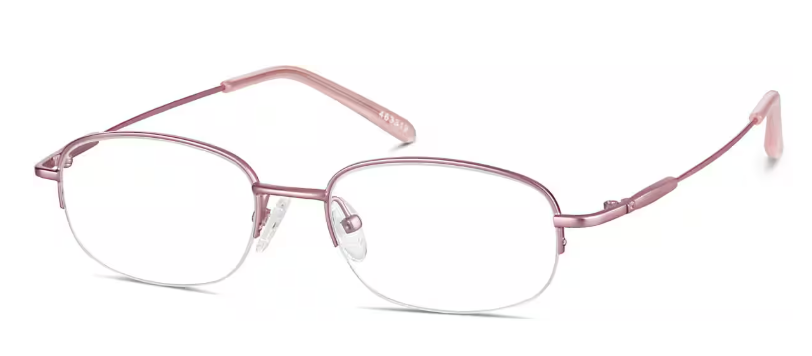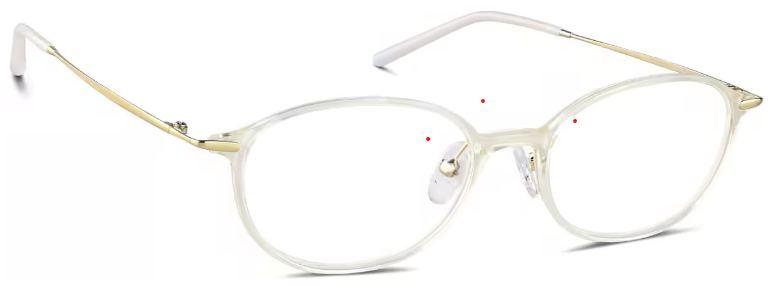Kinda Sorta Medieval Glasses. But Not.
A brief disclaimer: For some, eyeglasses are merely fashion
accessories, while for many, they are a necessity, prescribed by their doctor and custom-made to meet the specific needs of their eyes. Medical devices should
always be off the table when it comes to scrutinizing medieval “appropriateness.” Always. A person’s eyeglasses are not a part of their garb, unless they choose to make them so. One’s choice of glasses and
what is available (or not available) to them is nobody’s business but their own and their doctor's.
 |
| The Ill-matched Lovers by Jacob Cornelisz van Oostsanen c,c, 1510 - 1519, (oil on panel) - public domain |
My newcomer status in the SCA cannot last forever, and I have begun
giving thought to my path in the Society and how I can “up my game.” This
journey involves several elements, which I will likely write about at some
point. One element that led me to today’s musing was identifying and improving
upon glaringly modern things that are necessities (if you ask me), that I take to events that other people see while I am in persona.
That got the former optician in me thinking about what I would suggest to people who wanted a more medieval look to their next pair of modern prescription glasses. As I mentioned in the disclaimer, your choice of glasses is yours. The only right pair of glasses is the one that helps you see, fits comfortably, and looks good to you. I am presenting this information to you at your own discretion. If you are looking for a more medieval-adjacent style for your next frames, or if you are in the market for a second pair (it is never a bad idea to have a backup pair if you can afford to do so), here are some shopping suggestions for garb-friendly frames.
I am not affiliated with Zenni, nor am I popular enough on any electronic format to be monetized by anybody. The closest I ever came was making a funny comment on Instagram that received over 40,000 reactions, and even that wasn't my best work. It didn't earn me anything, except for an irritating number of notifications. I chose frames from Zenni to illustrate my suggestions because they are widely accessible, affordable, and offer a large selection of options. If you are more comfortable being fitted for glasses in person and working with an optician, you can use these suggestions anywhere..
Neutral frames that have a minimal presence in colors that blend into or complement your skin tone are an option that lets you and your garb take center stage. Some recommendations for choosing neutral frames are:
- simple shapes like round or oval
- soft, rounded edges
- thin "low profile" metals or plastics
- minimal designs free of large logos or decorations
- natural, complementary metal tones (gold, silver, bronze, pewter, gunmetal)
- matte or semi-matte finishes
- flesh-tone colors or muted, complementary colors in metals or transparent plastics
- semi-rimless frames (frame goes only partway around the lens)
- drill-mount (fully rimless, lenses are drilled and fitted with special temples and bridge)
- when choosing lenses, anti-reflective/anti-glare coatings can help soften the "glassy" appearance of lenses
 |
| Pink Oval Glasses #463319 from Zenni these semi-rimless frames feature thin metal frames and have a semi-matte blush pink finish complementary to some skin tones. Look for pinks, peaches, tans, taupes, medium and light browns to complement your skin tone |
 |
| Gold Rimless Glasses #1302914 from Zenni these drill-mount frames feature a high arched bridge, round lenses, and warm gold titanium temples and bridge. Though not a medieval style, they have an historic feel while still maintaining a minimal presence. |
 |
| Clear Oval #7833523 from Zenni these oblong frames have a transparent plastic frame front and understated gold temples |
 |
| Buff Round Glasses #7818615 from Zenni these rounded plastic frames are featured in a transparent medium-brown buff color with a fine band or tortoiseshell and metal temples |
 | |||||||||||
| Gold Round Glasses #414414 from Zenni (also available in silver and black) these might as well be called "the reenactor's special" simple, thin metal frame, free of ornamentation and a metal saddle-style bridge that sits directly on the bridge of the wearer's nose. Unobtrusive and lacking in visible plastic elements Medievaloid modern frames are a bolder option that is obtainable, wearable, and easy to fit with modern prescription lenses. Not meant to be passed off as documentable medieval replica frames, these are contemporary styles that can complement your look with colors, shapes, and materials evocative of medieval spectacles. Some things to look for:
In closing, I offer a gentle reminder to anyone seeking to have lenses placed into an antique frame or a reproduction frame (especially of fragile materials). Whether or not the optical shop will fit lenses into your frame is entirely at their discretion. Many 21st-century opticians have never been taught how to make or insert lenses into wooden, ivory, or faux ivory frames. Many modern practices do not even cut lenses on-site; instead, they are shipped to a commercial or corporate lab for fabrication and then returned to the opticians for dispensing. Those with on-site labs may encounter issues with computerized tracers not understanding your frame, or it's possible that the frame was designed in such a way that it simply does not cooperate with modern machinery. It is also possible that they do not want to take the risk of potentially damaging your rare or unusual frame. Optical shops have contracts with their frame manufacturers that cover their products in the event of a defect or an issue in the lab. They do not have a contract with the Etsy seller from whom you bought your handmade ebony pince-nez frames. I can guarantee from my experience that the last thing people in optical labs want to do is call you and tell you they broke your frame. Even in high-output labs, they take the greatest of care to avoid issues. It is fair to expect that they might require you to sign a waiver releasing their business from responsibility for the frame, and you may still be responsible for certain lab-related costs even if the glasses cannot be completed. I was always happy to take on a special request when I was an optician, but never at the risk of my practice. Please be courteous when making these unusual requests and respect their policies, even if you wish the answer were different. And if they decline the job, be thankful that they were honest with you instead of taking a potentially costly risk. Whether you are looking to make your modern eyeglass choices better fit in with your medieval persona or want to bring some medieval flair into your modern attire, I hope this guide has given you some ideas to find the perfect pair. +pax et bonum+ Brother Valentine |






.jpgFull%20Dyptich.jpg)

Comments
Post a Comment